The Big Bang may have not been alone. The appearance of all the particles and radiation in the universe may have been joined by another Big Bang that flooded our universe with dark matter particles. And we may be able to detect it.
Continue reading “The Universe May Have Started with a Dark Big Bang”It Would Take Hubble 85 Years to Match What Nancy Grace Roman Will See in 63 Days
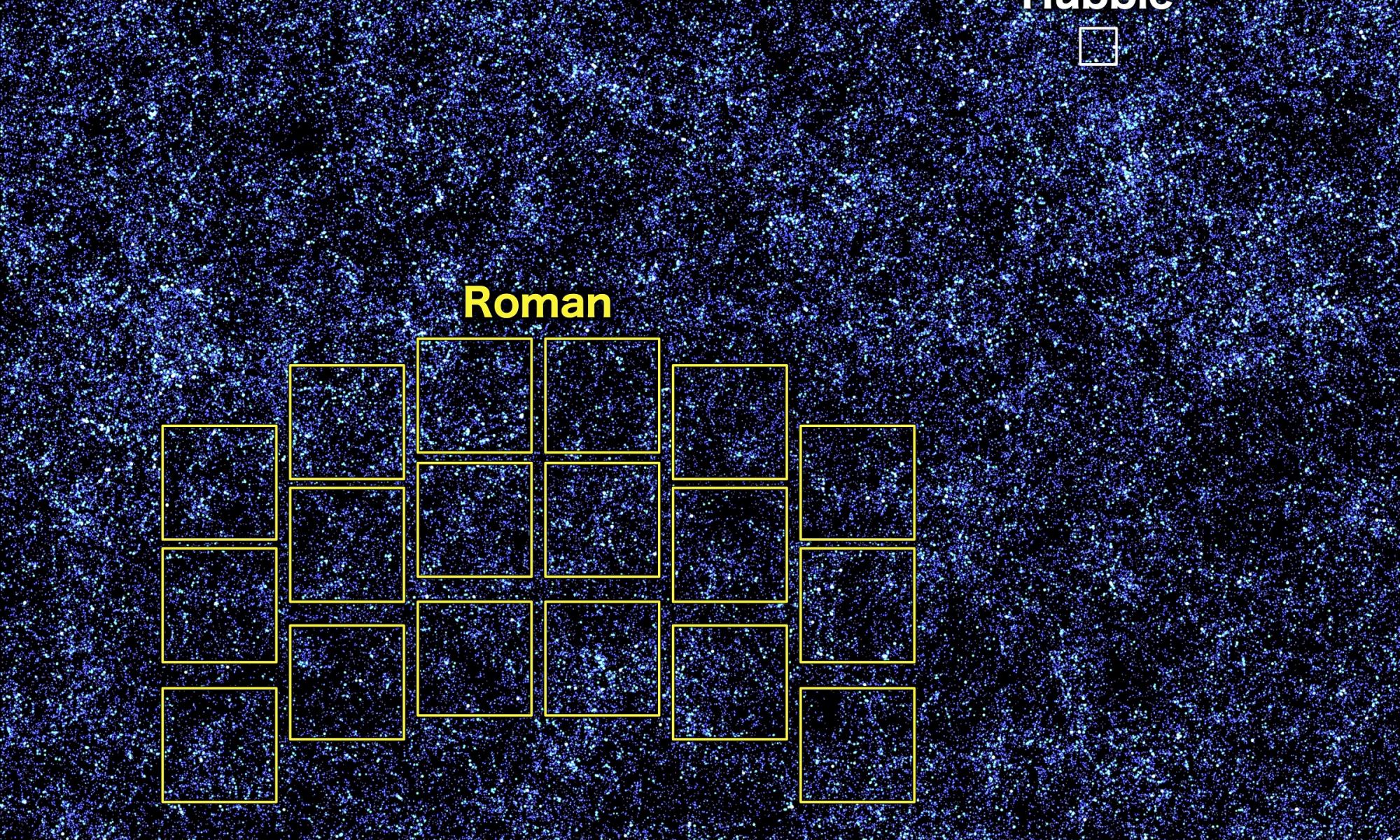
Less than a year and a half into its primary mission, the James Webb Space Telescope (JWST) has already revolutionized astronomy as we know it. Using its advanced optics, infrared imaging, and spectrometers, the JWST has provided us with the most detailed and breathtaking images of the cosmos to date. But in the coming years, this telescope and its peers will be joined by another next-generation instrument: the Nancy Grace Roman Space Telescope (RST). Appropriately named after “the Mother of Hubble,” Roman will pick up where Hubble left off by peering back to the beginning of time.
Like Hubble, the RST will have a 2.4-meter (7.9 ft) primary mirror and advanced instruments to capture images in different wavelengths. However, the RST will also have a gigantic 300-megapixel camera – the Wide Field Instrument (WFI) – that will enable a field of view two-hundred times greater than Hubble’s. In a recent study, an international team of NASA-led researchers described a simulation they created that previewed what the RST could see. The resulting data set will enable new experiments and opportunities for the RST once it takes to space in 2027.
Continue reading “It Would Take Hubble 85 Years to Match What Nancy Grace Roman Will See in 63 Days”The James Webb Is Getting Closer to Finding What Ionized the Universe
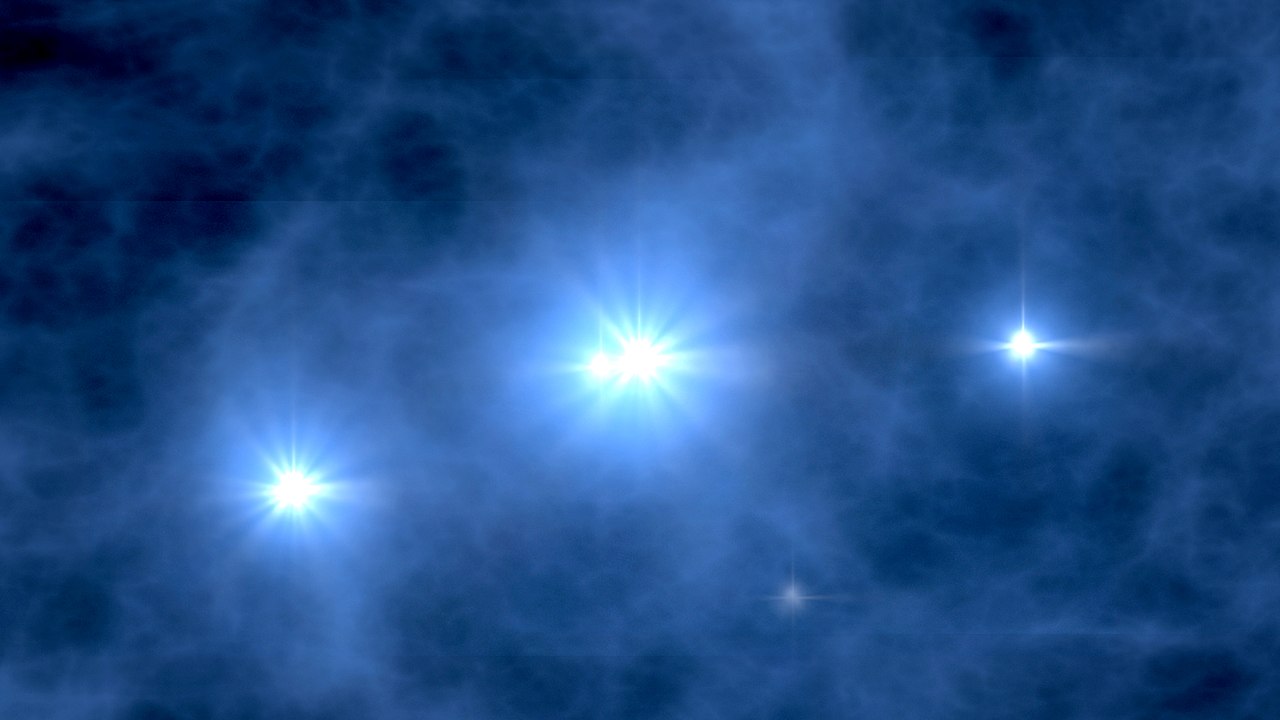
Astronomers have determined that so-called “leaky” galaxies may have responsible for triggering the last great transformational epoch in our universe, one which ionized the neutral interstellar gas.
Continue reading “The James Webb Is Getting Closer to Finding What Ionized the Universe”Even the Largest Structures in the Universe Have a Magnetic Field
The universe is filled with magnetic fields. Although the universe is electrically neutral, atoms can be ionized into positively charged nuclei and negatively charged electrons. When those charges are accelerated, they create magnetic fields. One of the most common sources of magnetic fields on large scales comes from the collisions between and within interstellar plasma. This is one of the major sources of magnetic fields for galactic-scale magnetic fields.
Continue reading “Even the Largest Structures in the Universe Have a Magnetic Field”Clouds of Carbon Dust Seen When the Universe was Less Than a Billion Years Old
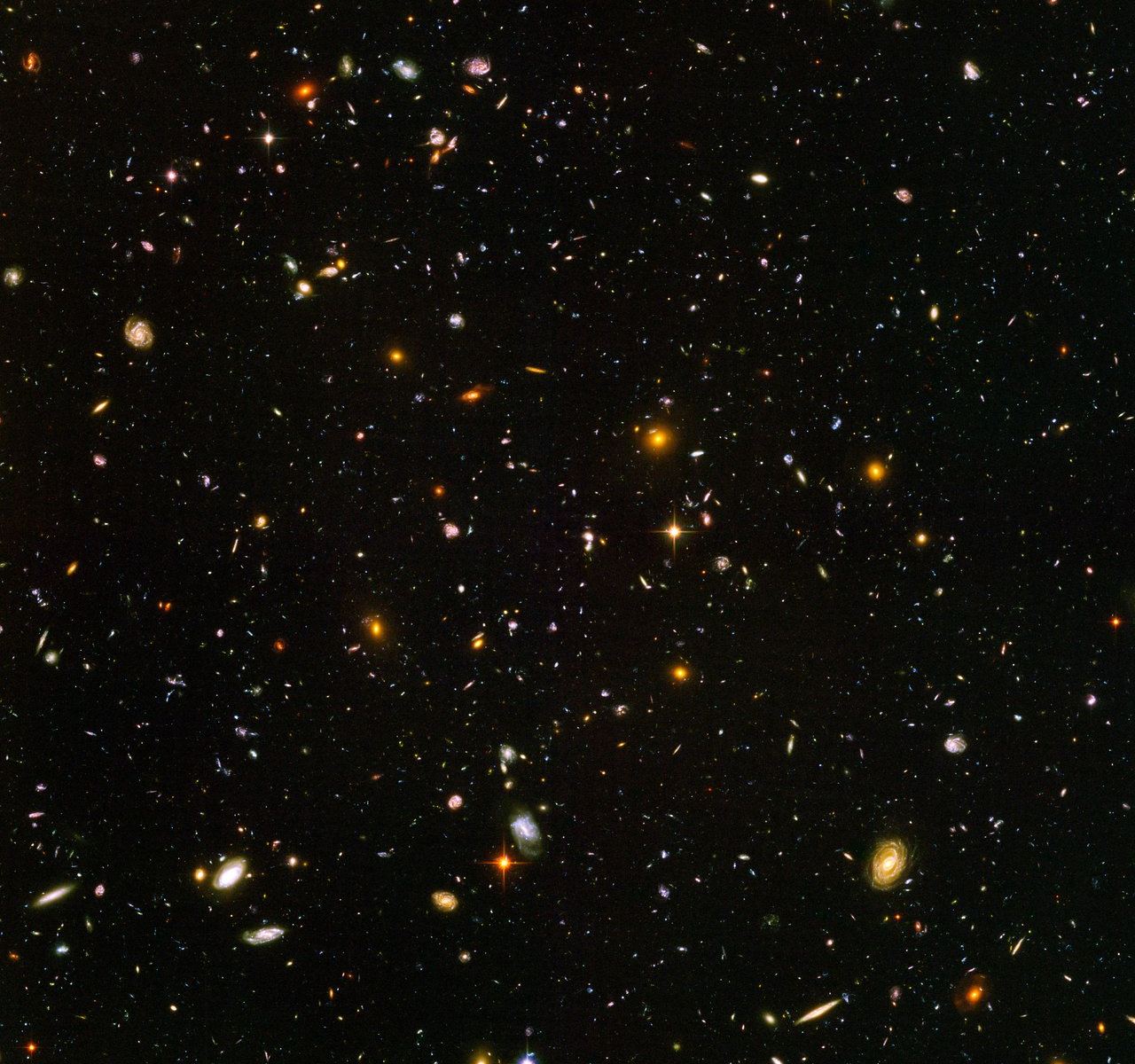
The Milky Way Galaxy contains an estimated one hundred billion stars. Between these lies the Interstellar Medium (ISM), a region permeated by gas and dust grains. This dust is largely composed of heavier elements, including silicate minerals, ice, carbon, and iron compounds. This dust plays a key role in the evolution of galaxies, facilitating the gravitational collapse of gas clouds to form new stars. This galactic dust is measurable by how it attenuates starlight from distant galaxies, causing it to shift from ultraviolet to far-infrared radiation.
However, the origin of various dust grains is still a mystery, especially during the early Universe when heavier elements are thought to have been scarce. Previously, scientists believed that elements like carbon took hundreds of millions of years to form and could not have existed before about 2.5 billion years after the Big Bang. Using data obtained by the JWST Advanced Deep Extragalactic Survey (JADES), an international team of astronomers and astrophysicists report the detection of carbonaceous grains around a galaxy that existed roughly 1 billion years after the Big Bang.
Continue reading “Clouds of Carbon Dust Seen When the Universe was Less Than a Billion Years Old”Are Black Holes the Source of Dark Energy?

By the 1920s, astronomers learned that the Universe was expanding as Einstein’s Theory of General Relativity predicted. This led to a debate among astrophysicists between those who believed the Universe began with a Big Bang and those who believed the Universe existed in a Steady State. By the 1960s, the first measurements of the Cosmic Microwave Background (CMB) indicated that the former was the most likely scenario. And by the 1990s, the Hubble Deep Fields provided the deepest images of the Universe ever taken, revealing galaxies as they appeared just a few hundred million years after the Big Bang.
Over time, these discoveries led to an astounding realization: the rate at which the Universe is expanding (aka. the Hubble Constant) has not been constant over time! This led to the theory of Dark Energy, an invisible force that counteracts gravity and causes this expansion to accelerate. In a series of papers, an international team of researchers led by the University of Hawaii reported that black holes in ancient and dormant galaxies were growing more than expected. This constitutes (they claim) the first evidence that black holes could be the source of Dark Energy.
Continue reading “Are Black Holes the Source of Dark Energy?”When Neutron Stars Collide, the Explosion is Perfectly Spherical
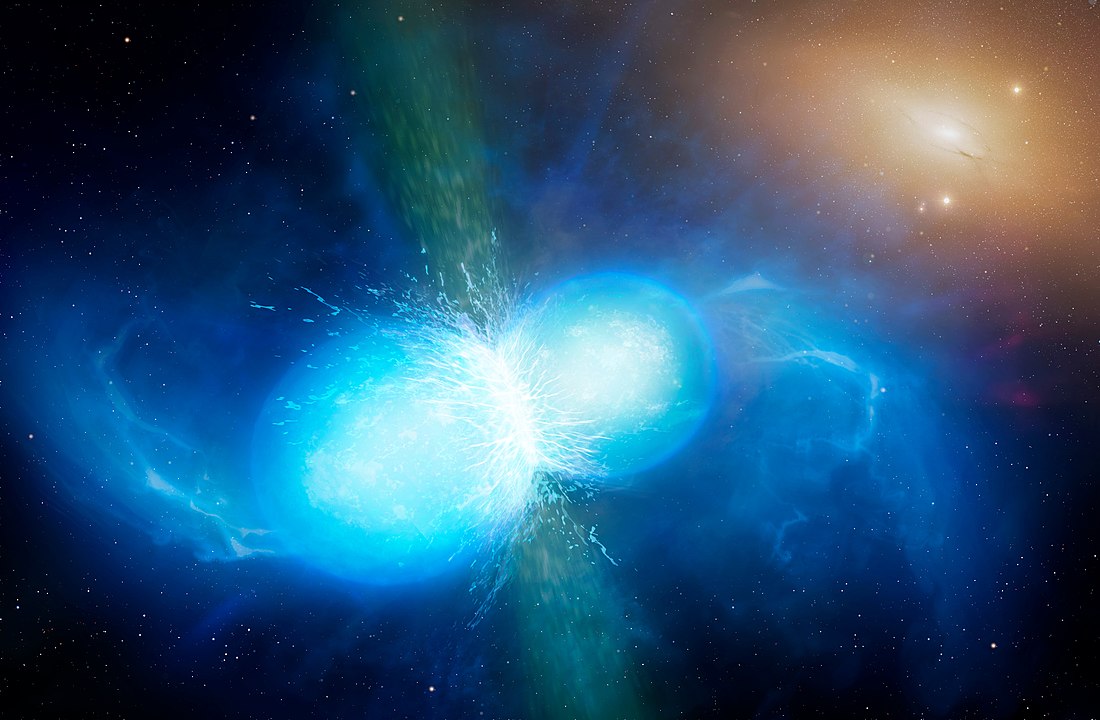
Kilonovae are incredibly powerful explosions. Whereas regular supernovae occur when two white dwarfs collide, or the core of a massive star collapses into a neutron star, kilonovae occur when two neutron stars collide. You would think that neutron star collisions would produce explosions with all sorts of strange shapes depending on the angle and speed of the collisions, but new research shows kilonovae are very spherical, and this has some serious implications for cosmology.
Continue reading “When Neutron Stars Collide, the Explosion is Perfectly Spherical”Could a Dark Energy Phase Change Relieve the Hubble Tension?

According to the most widely-accepted cosmological theories, the Universe began roughly 13.8 billion years ago in a massive explosion known as the Big Bang. Ever since then, the Universe has been in a constant state of expansion, what astrophysicists know as the Hubble Constant. For decades, astronomers have attempted to measure the rate of expansion, which has traditionally been done in two ways. One consists of measuring expansion locally using variable stars and supernovae, while the other involves cosmological models and redshift measurements of the Cosmic Microwave Background (CMB).
Unfortunately, these two methods have produced different values over the past decade, giving rise to what is known as the Hubble Tension. To resolve this discrepancy, astronomers believe that some additional force (like “Early Dark Energy“) may have been present during the early Universe that we haven’t accounted for yet. According to a team of particle physicists, the Hubble Tension could be resolved by a “New Early Dark Energy” (NEDE) in the early Universe. This energy, they argue, would have experienced a phase transition as the Universe began to expand, then disappeared.
Continue reading “Could a Dark Energy Phase Change Relieve the Hubble Tension?”Astronomers Make a New Map of all the Matter (and Dark Matter) in the Universe

There’s a lot of matter in the Universe, but not all of it is visible to us. Matter is, essentially, anything that has mass and takes up space. That includes us, the planets, stars, nebulae, and galaxies. It also includes dark matter. It’s all spread out through space.
Continue reading “Astronomers Make a New Map of all the Matter (and Dark Matter) in the Universe”According to Simulations, the Milky Way is One in a Million
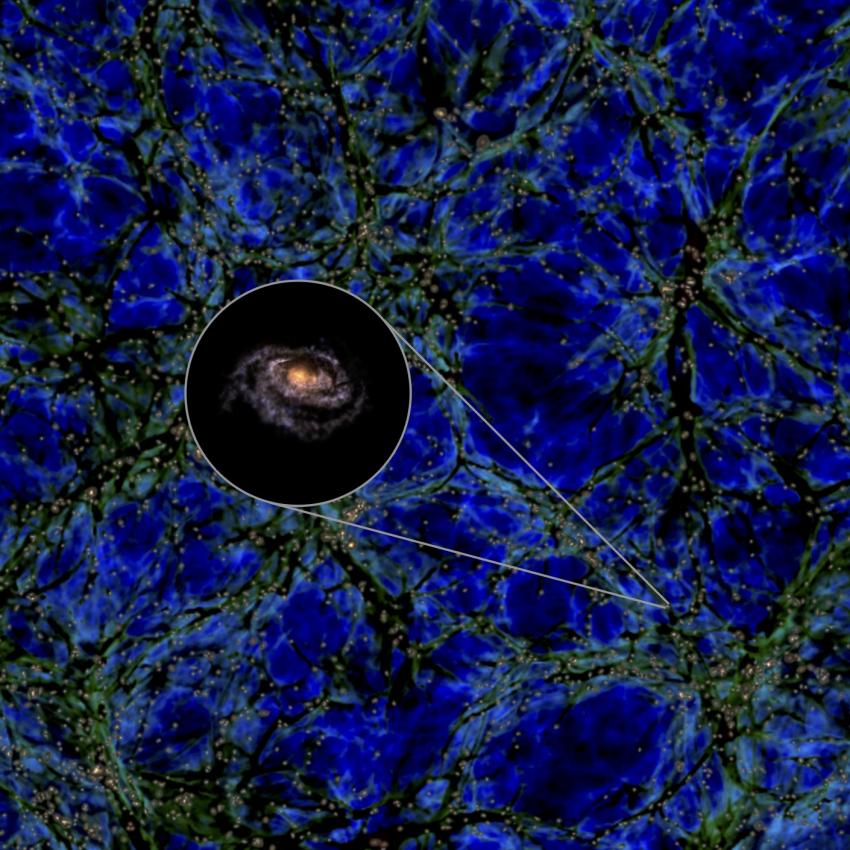
Humanity is in a back-and-forth relationship with nature. First, we thought we were at the center of everything, with the Sun and the entire cosmos rotating around our little planet. We eventually realized that wasn’t true. Over the centuries, we’ve found that though Earth and life might be rare, our Sun is pretty normal, our Solar System is relatively non-descript, and even our galaxy is one of the billions of spiral galaxies, a type that makes up 60% of the galaxies in the Universe.
But the Illustris TNG simulation shows that the Milky Way is special.
Continue reading “According to Simulations, the Milky Way is One in a Million”

